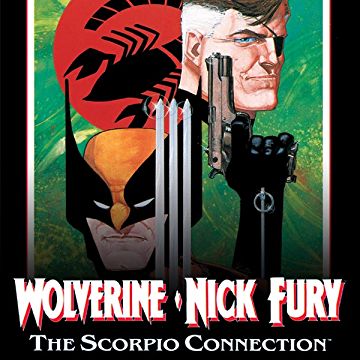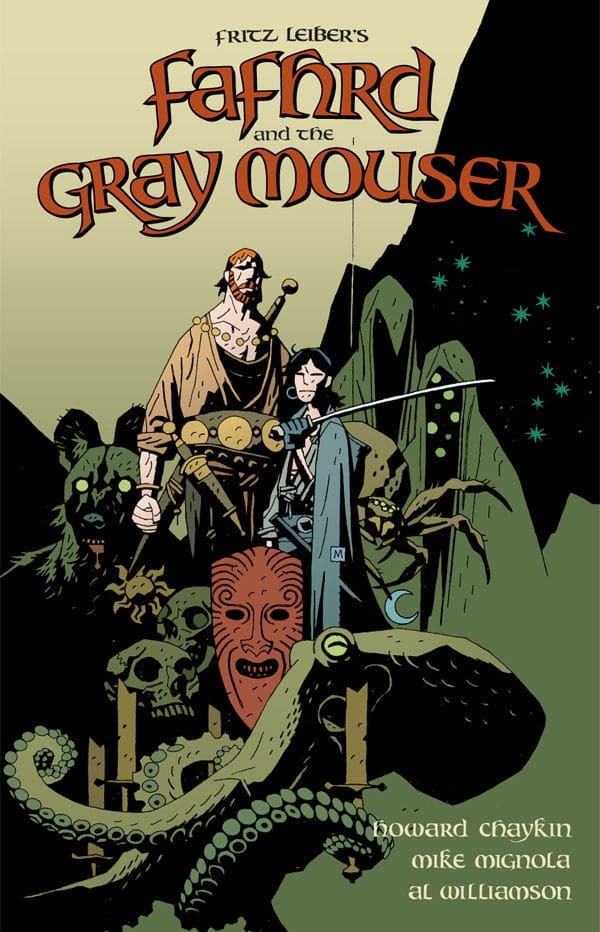Howard Chaykin is one of the cult heroes of the comic book world. He has all the qualities necessary to be a comic book rock star with his quirky personality, ability to play as both writer and artist, and steady body of groundbreaking work. Yet Chaykin never quite achieved the rock star status that many of his contemporaries would earn like Frank Miller or Alan Moore. That doesn’t mean that he’s not every bit as important as those luminaries, but he’s still considered by many to be living in their shadows.
One shadow Chaykin is apparently ready to get out from under is his early work on the original Star Wars title from Marvel in 1977-1978. Chaykin provided interior art on the first ten issues of the series, and is given a co-writing credit for three of the issues as well.
Back in January, Chaykin posted a not-so-subtle rant on Facebook attempting to distance himself from that early work. Seemingly referencing his early work on the galaxy-spanning Star Wars, Chaykin calls his early work on the title “insipid adolescent junk.” Ouch.
Fair enough, Mr. Chaykin. We might split hairs over how you approached this issue, but you are well within your right to have quibbles about how comic book conventions advertise your talents.
I’m going to attempt to provide some direction for readers curious about checking out the books from Chaykin that don’t include laser swords or Death Stars.
American Flagg!

Chaykin’s undisputed crown jewel is his series American Flagg! from First Comics. Published from 1983-1989 and taking place in 2031, American Flagg! follows the misadventures of Reuben Flagg, a former television star who is drafted into the ranks of the Plexus Rangers, a corporation that runs the American government. It’s a story that mixes social, political, and economic commentary in a spiffy looking package. The first twelve issues tell a very cohesive, connected story, split conveniently into four three-issue arcs. Though the title lasted for 62 issues and a couple of specials, these first twelve issues are the real meat of the story.
Fans looking for a convenient way to grab some issues can find collections from Image. In recent years, Image has collected the first fourteen issues in a single hardcover and two softcover collections. Fans looking for collected editions outside those first fourteen will have to look in the back issue bins at your LCS. Fortunately, back issues of the title are insanely easy to grab out of dollars bins and online retailers on the interwebs. However, the quality of the book, and even Chaykin’s own involvement in the series, is spotty at best.
Satellite Sam
Howard Chaykin’s work is generally seen exploring the seedier side of society, with heavy noir tendencies. Chaykin recently collaborated with Matt Fraction with Satellite Sam at Image Comics to do just that with the 1950s. Satellite Sam is set in the early days of television. Following the death of the star of the popular serial Satellite Sam, his son Mike begins to investigate the death as murder, trying to unlock the secrets of his father’s past and the intricate layers of intrigue in early network television.
While not written by Chaykin, Fraction is obviously showing his Chaykin fanboy roots throughout its fifteen issues. One can definitely go into this book not knowing that Chaykin didn’t write it and walk away thinking that he actually did. Of course, having Chaykin on art was a superb move on Fraction’s part, as each page is stellar, classic Chaykin. The entire series is collected into three softcover volumes or a single hardcover collection.
Wolverine & Nick Fury: The Scorpio Connection

This particular book holds a lot of nostalgic value for me. The Scorpio Connection was the first Chaykin comic I read, and it had to be the first OGN I ever read as well. The Scorpio Connection was one of the few comic book trades our school’s library had back in the early 1990s. This 1989 graphic novel is written by Archie Goodwin with art from Chaykin. The graphic novel tells the story of Fury’s old enemy Scorpio returning. There’s a huge plot twist to the new Scorpio’s identity that turns Fury’s world upside down. It’s all good comic book melodrama and pathos!
In retrospect, The Scorpio Connection isn’t a classic, but it’s a solidly entertaining read that showcases Chaykin’s talent as an artist. It was super cool as a kid to see his depictions of childhood favorites Fury and Wolverine. The Scorpio Connection is collected along with its 1991 sequels Bloody Choices and Scorpio Rising in the trade Wolverine & Nick Fury: Scorpio in 2012. However, copies of The Scorpio Connection can easily be found in comic shops and online retailers on the cheap.
The Shadow: Blood & Judgement
Howard Chaykin has always been a bit of a rabble rousing raconteur unafraid to ruffle a few feathers at the expense of telling an entertaining story. His blunt, and at times confrontational, persona can be seen as being antagonistic. His comics have always been rebellious, and his 1986 miniseries revival of The Shadow for DC is probably the finest example of his unruly sensibilities. Thirty plus years on, this miniseries still sparks a passionate and divisive response from fans.
Chaykin’s main change? He brought The Shadow into the modern era, and he even gave him a pair of Uzis to use. Traditional fans of The Shadow were howled, furious over the move, and still complain loudly online and in person to anyone willing to listen. However, many fans do enjoy his miniseries, which lead to the deliciously weird cult classic ongoing from Andy Helfer, Bill Seinkiewicz and Kyle Baker. The Blood & Judgement miniseries has been collected several times throughout the years by DC and Dynamite. Chaykin even produced a new miniseries Midnight to Moscow for Dynamite in 2014.
Fafhrd and the Gray Mouser

Howard Chaykin and Mike Mignola adapting fantasy pioneer Fritz Leiber’s greatest works? Do I really have to sell this book further?
This 1990 miniseries from Marvel isn’t exactly a graphic novel intended to tell a singular story. Rather, this miniseries adapted seven of the original Fafhrd and the Gray Mouser stories by Fritz Leiber. That might give the book a bit of a disjointed quality to modern readers who pick up a comic expecting to read one continuous story rather than adaptations of disparate short stories. If a reader goes into this book with that knowledge, they won’t be caught off guard.
Chaykin’s script, much as he does with anything he adapts, boils down the dynamic duo of sword and sorcery to their basic essentials. Many Lieber purists might quibble with Chaykin’s story adapting liberties, but they won’t have any problems with Mignola’s artwork. It’s awesome to see some of Mignola’s pre-Hellboy pencils, and he does not disappoint throughout the seven adaptations. The original Marvel issues are still quite easy to find, but Dark Horse produced a trade about a decade ago collecting the entire miniseries that can be found on the cheap as well
Bite Club
Before American Vampire became the standard for Vertigo Vampire comics, there was Bite Club. Howard Chaykin had several really awesome Vertigo and DC books come out in the early 2000s. While most of his work for DC proper was with their Elseworld line giving him the ability to reconfigure longstanding characters without terribly upsetting fans, his Vertigo work gave him more of a blank check to deal with the more adult themes that characterize much of his indie work. Case in point is his lovely vampire comic Bite Club. Set in Miami, both of the two Bite Club miniseries follow the story of the del Toro crime family who are, you guessed it, vampires!
With help from his frequent 2000s writing partner David Tischman, art from David Hahn, and covers from Frank Quitely, Bite Club is the perfect mix of Godfather meets True Blood meets Game of Thrones. Though it only lasted eleven issues, the story definitely has a (wait for it) bite. A collection of both miniseries was released in 2007 as The Complete Bite Club.
American Century

American Century was another one of Chaykin’s Vertigo books from the early 2000s that I really enjoyed. In fact, I would say that thus far it has been my favorite work from Chaykin in the 21st Century.
American Century was a wild comic book. It followed the zany adventures of Harry Kraft, who fakes his own death and travels around the country from job to job as he tries to establish himself with a new life. Each arc featured Harry in a new role, on the run from his past in the best gritty, noir ways possible. Mild spoilers: he eventually ends up working in comic books! It’s pretty bonkers, quintessential Chaykin.
Amazingly, this Vertigo series lasted 27 issues despite have low sales. I remember rumors persisting at the time that Chaykin had struck some Faustian deal with the DC editorial types to keep his book alive despite the fact that it sold far less copies than many other titles that were getting the axe. I can’t speak to those rumors, but I can say that I thoroughly enjoyed each and every issue that hit the stands as it was being released.
Unfortunately, only the first nine issues were collected: Scars & Stripes and Hollywood Babylon. In theory, the remaining issues could potentially be harder to find than most on this list since print runs were so low by the time cancelation occurred. However, they are definitely worth the hunt if you want to read one of Chaykin’s best works!

